Candy washing machine leaking
 Being quite complex in design, modern washing machines break down not so rarely. This applies to household appliances of absolutely all brands, so it is not surprising that the Candy washing machine is leaking. In this situation, the problem can be either subtle or significant, threatening your flooring and even your neighbors below. In any case, it is prohibited to use the “home assistant” if the seal is broken, so you need to detect and eliminate the leak as quickly as possible. We'll tell you how to quickly do this at home without calling a service center specialist.
Being quite complex in design, modern washing machines break down not so rarely. This applies to household appliances of absolutely all brands, so it is not surprising that the Candy washing machine is leaking. In this situation, the problem can be either subtle or significant, threatening your flooring and even your neighbors below. In any case, it is prohibited to use the “home assistant” if the seal is broken, so you need to detect and eliminate the leak as quickly as possible. We'll tell you how to quickly do this at home without calling a service center specialist.
How to find a hole?
If you see a leak from the bottom of the Candy device, then you cannot leave it like that. First of all, disconnect the machine from the power supply, and if a puddle has already formed under the SM, then you should carefully remove the cord from the outlet without touching the water, so as not to receive an electric shock.
The smallest detail can help in finding the location of the leak, so try to remember at what point in operation the device began to leak.
You can often find the cause of water under the washing machine with a simple inspection. If it leaks from under the door, then most likely the rubber seal in the hatch has become deformed. If liquid flows from somewhere above, then you should pay attention to the detergent tray located in the upper left corner of the device. You should also consider the situation when the unit is leaking from somewhere below, which may be due to damage to the tank or pipes.This can only be discovered through a detailed inspection, for which you may have to dismantle the back and side panels of the Candy automatic SM.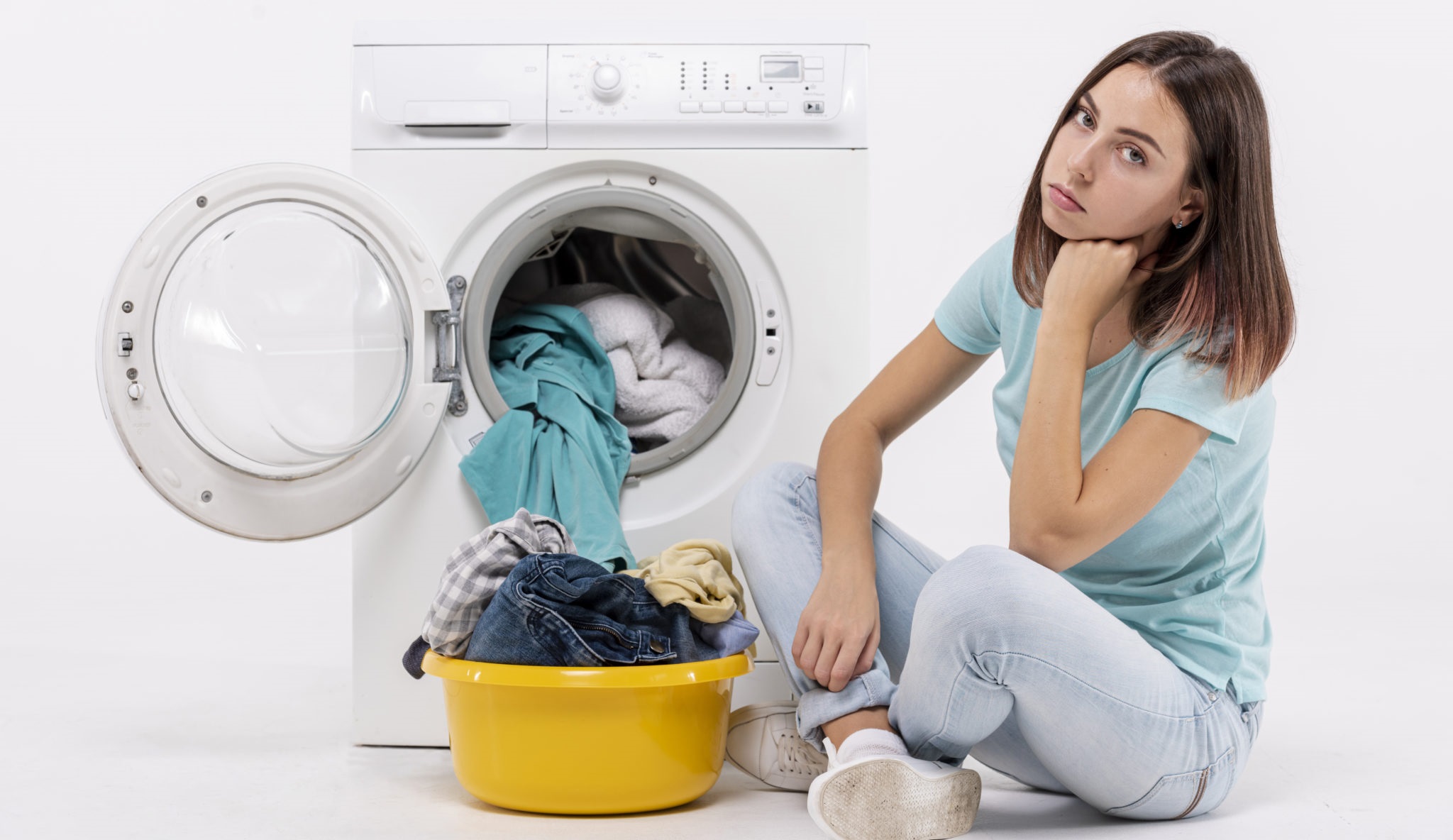
Accordingly, the repair will depend solely on where the machine is leaking. If the reason is a rubber seal or a deformed cuvette for household chemicals, then you need to buy new spare parts and install them yourself in place of the damaged ones. However, if there is a leak from below due to a failed tank, then most likely you will have to call a technician. Often, water appears under the washing machine for standard reasons.
- The user did not comply with safety precautions and operating instructions.
- During work, low-quality household chemicals were regularly used.
- Manufacturing defects.
- Damage to the key unit of the device.
What to do if your favorite “home assistant” has already been de-energized, disassembled and examined, but the naked eye still could not determine the cause of the breakdown? In this case, you need to manually test each individual device node in order to find the source of the problem. Let's start with the most basic area - the garbage filter, so as not to waste time and gradually move on to the most complex problems.
Inspect the drain hose and filter
Water under the washing machine does not always indicate damage to some element, because the leak may have occurred due to a simple user error. For example, a housewife may have installed the garbage filter incorrectly after routine cleaning. Be sure to check whether the emergency drain hose is properly filled, because poor fixation of the parts may have caused the leak.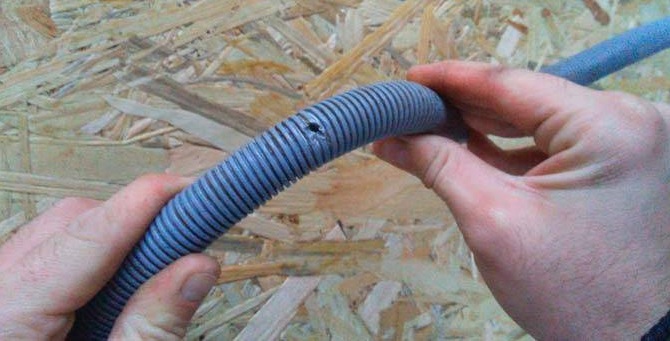
If the drainage filter does not raise any questions, then you need to look under the device.There is a possibility that the leak occurred due to a loose clamp that secures the pipe to the pump, or due to a deformed fitting. In this case, it will be very easy to correct the situation - you just need to tighten the clamp tightly, or carefully treat all the cracks with waterproof sealant. In this case, it will be much easier and safer to simply replace the damaged elements with new ones in order to completely forget about them for a long time.
Dispenser tray, pipe
If you find a large puddle under the Candy “home assistant”, this does not mean that it is leaking from below. Perhaps the source of the problem is hidden in the powder receptacle, on the walls of which an excessive amount of washing powder has stuck, which caused the overflow. In this case, the liquid simply will not be able to pass into the tank, so it will begin to actively pour out onto the floor.
In addition, the detergent tray could simply crack, given the rather fragile plastic from which it is made. Remove the element and carefully examine its integrity. If everything is visually in order, then wipe the bottom and then fill it with water to test. If, after filling the container, drops begin to appear from below, then the powder receptacle has lost its tightness and needs to be replaced.
You should also carefully examine the filler pipe, which can fail even in new Candy washing machines after only a few years of operation. It is believed that this happens due to the use of low-quality materials during production at the factory.
If the device leaks while drawing water from the water supply, it is the household chemicals tray, the inlet pipe and the inlet hose that should be examined.
Finally, the cause of the breakdown can be found in the filler sleeve. This element is also capable of deforming over time, which is why microcracks appear on it, through which water will flow. Plus, the clamps at the places where the hose is attached to the SM body could simply loosen, where a leak could also form.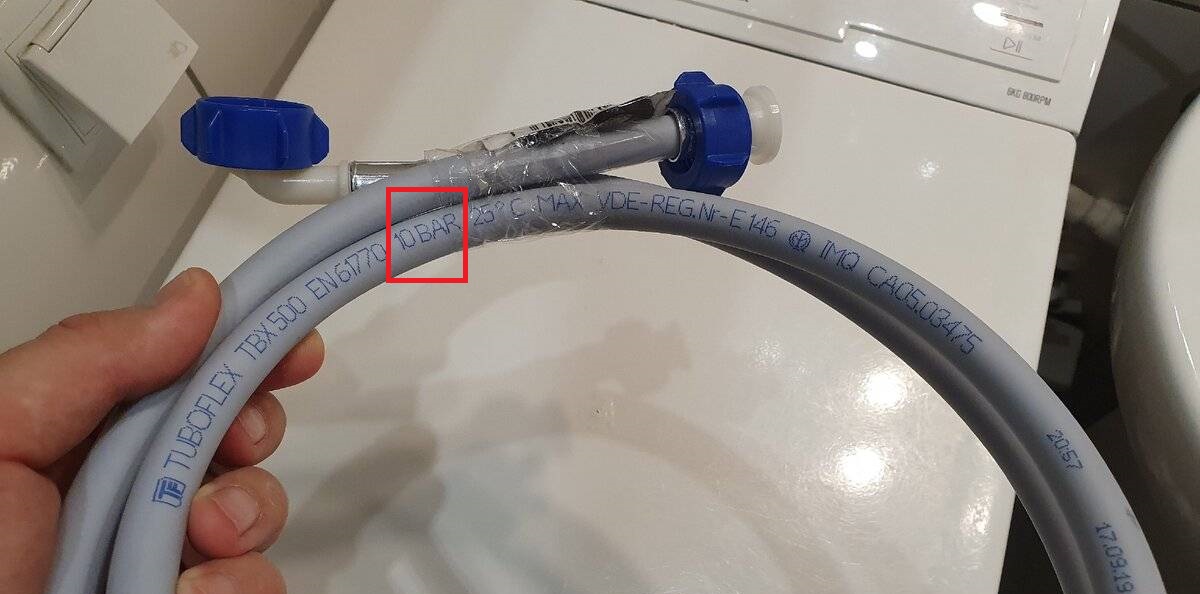
If the liquid leaks not at the stage of collecting water, but already during the washing process, then you should also examine the drain pipe, the path of which goes from the tank to the pump. To test this theory, just look under the machine and check whether the outside of the sleeve is wet or not. If yes, then you will have to change the element to a new one.
Finding the problem will be easier if you remember that equipment often leaks in those areas where the hoses are attached to the elements of the Candy washing machine. This is also why repair service staff advise treating such areas with a waterproof sealant to provide additional protection against leaks.
Drum rubber or tank
It is very unpleasant when the cause of a breakdown is hidden in a cracked washing tub. This means that most likely repair is impossible, so you will just have to buy a new tank, the cost of which can seriously hit the family budget. This can happen due to a foreign sharp object that gets into the tank along with clothes, for example, such as a nail, paper clips, hairpin or underwire from a bra. In addition, regular cleaning of shoes, or a banal factory defect could have an effect.
To inspect the tank, it is necessary to disassemble household appliances, which usually includes dismantling the lid, back and front panels. At the same time, without experience in repairs, it is better not to try to replace it, so it is better to entrust the work to a service center specialist.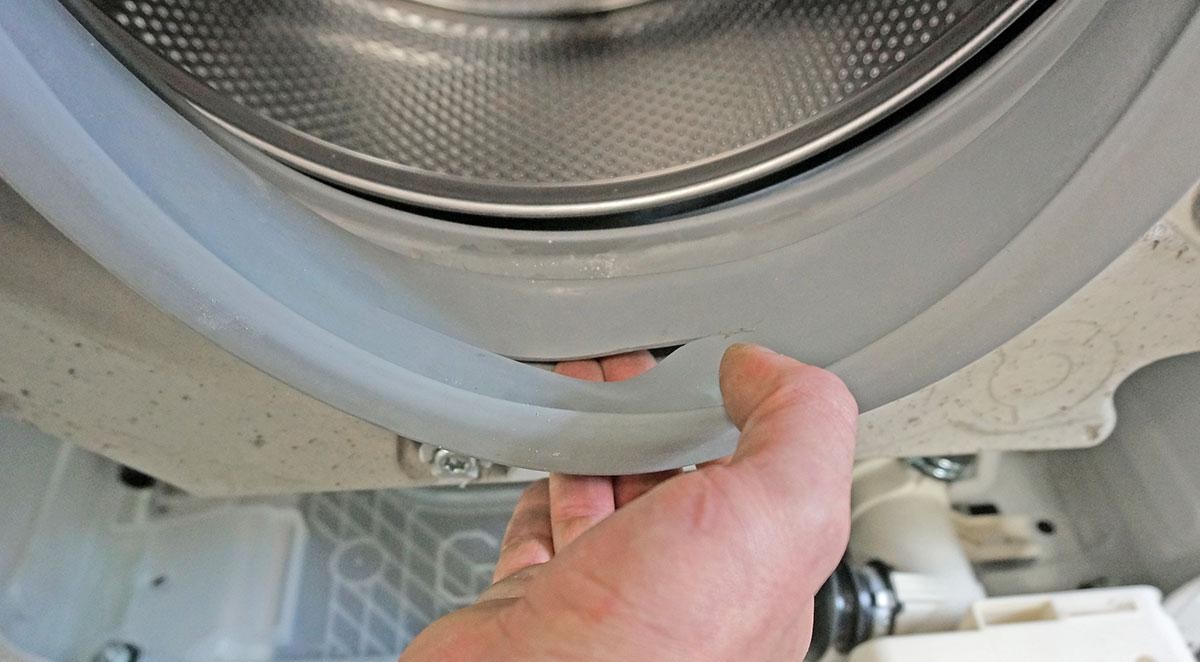
If the problem is not in the tank, but a leak appears under the hatch door, then most likely the source is a damaged rubber seal. When the hole is small, it is permissible to use a patch or waterproof sealant. You can also simply turn the cuff up if the damage is on the bottom. But the best thing in this situation is to simply buy a new rubber band to prevent repeated leaks in the foreseeable future.
It is very simple to avoid damage to the rubber seal - you need to carefully load the laundry into the drum, and just as carefully remove it after washing. In addition, you should not leave sharp objects in your clothing pockets, such as nails, keys or paper clips, which can cut elastic.
We find and fix the problem
Do not forget that if the warranty on your “home assistant” is still active, then it is better not to even try to restore it yourself. In such a situation, you should immediately call the service so that your device can be checked and repaired free of charge under warranty. If the warranty period has already passed, then you can try to fix the problem yourself at home.
First of all, after detecting a leak, it is necessary to disconnect the equipment from the power supply, while avoiding puddles. If this is not possible, because there is too much water, so there is no access to the power supply, then you should turn off the power to the house using an electrical panel. What to do next with household appliances?
- Close the shut-off valve and disconnect the machine from the water supply.
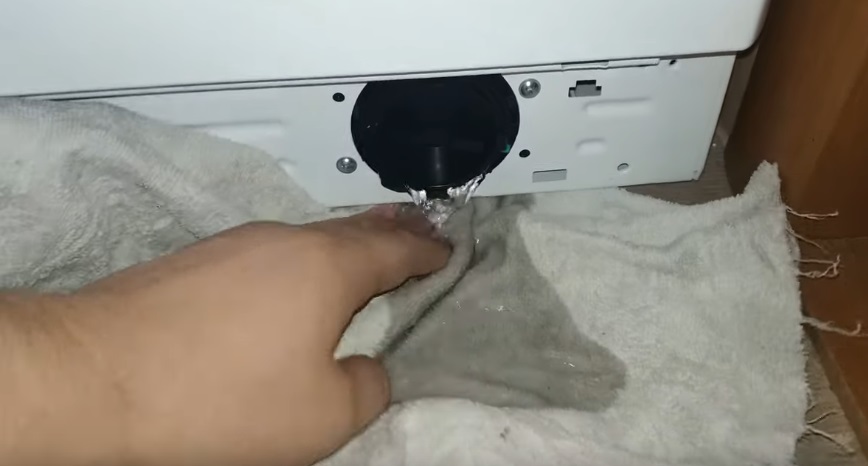
- If there is water left in the system, you need to drain it yourself using an emergency drain hose or through a drain filter.
Be sure to prepare a container for waste liquid in advance so as not to flood the floors even more.
- Open the SM door and take out the laundry.
- Start a full device scan.
The further course of action depends on the source of the problem. If the problem is caused by hoses or pipes, then it would be safer to simply dismantle them and then install new spare parts in their place. If for some reason it is not possible to buy a replacement, then it is permissible to install a patch on the damaged element, or apply a waterproof sealant.
Leaks on the left or top tell the user that the problem is most likely hidden in the powder receptacle. Take it out of the case and examine it carefully. The reason may be the formation of limescale, which must be removed with a sponge with an abrasive surface or using a citric acid solution. The problem may also be clogged holes in the tray for household chemicals, which should also be cleaned from time to time.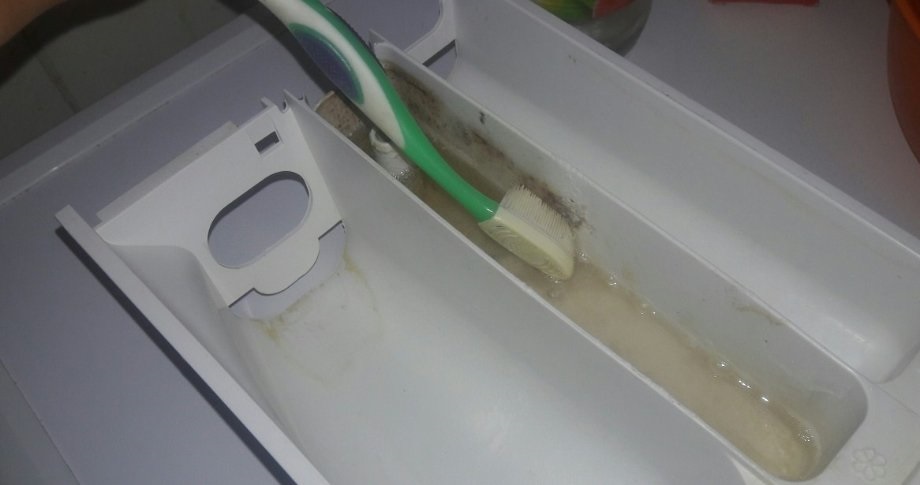
If your powder receptacle is broken, it is better not to try to repair it, but to immediately buy a new one. In such a situation, you need to take the damaged part with you to the store as an example, or rewrite the SM serial number so as not to make a mistake when choosing a new detergent cuvette.
Occasionally, a leak may occur due to excessive water pressure - in this case, you just need to slightly close the fill valve.
When liquid leaks through the hatch door, you need to check the rubber drum seal. Examine the cuff for cracks or creases, and then replace it if you find critical damage that cannot be repaired. To dismantle you will have to remove the clamps holding it. Moreover, if the crack is small, then you can either place a patch on it or cover the element with a moisture-resistant sealant.
Also pay attention to the leak time. For example, if a leak appears immediately after the start of the operating cycle, then you need to inspect the inlet valve. To do this, you will have to remove the lid of the Candy washing machine. If the problem is really in the valve, you need to replace it, since there is no point in repairing this element.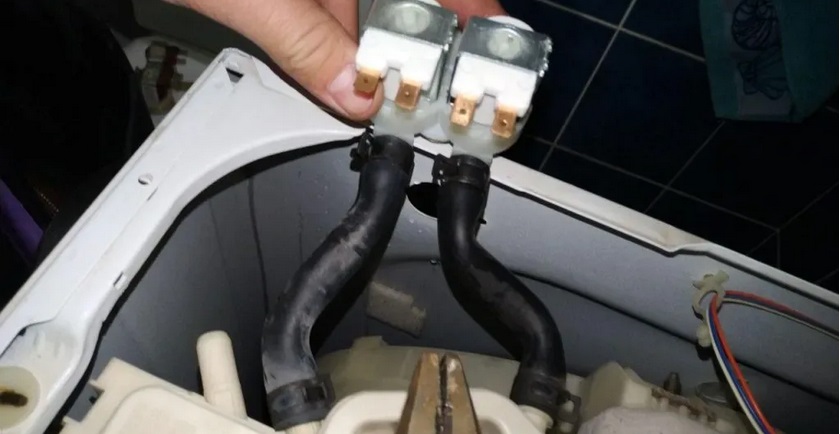
If you suspect that the leak is due to a damaged inlet hose or clamps, you need to carefully examine the place where the hose is connected to the body. If leaks are detected, you must immediately:
- remove the filler sleeve;
- wipe the connection area with a dry cloth;
- remove the glue that is located at the fastener site;
- dry the connection area;
- treat the end of the hose with waterproof sealant or glue;
- install the element in its place.
It also cannot be ruled out that the leak occurred due to simple wear or deformation of the inlet hose. If this is indeed the case, then you will have to install a new sleeve instead of the unusable element. However, you should not try to extend its service life with glue or patches, as this is very dangerous due to the strong pressure of water that regularly passes through it.
Finally, if the cause of the malfunction is a cracked tank, then a long and complex repair awaits, which begins with disassembling the “home assistant”. What should I do for this?
- Remove the top panel CM.
- Remove the household chemical cuvette.

- Remove all the bolts that hold the control panel in place and move it to the side.
Carefully disconnect the wiring, and also do not forget to photograph the correct connection of all wires, so that later you will have an example at hand for reassembly.
- Remove the rear panel clips and then the rear panel itself.
- Detach the front panel of the washing machine.
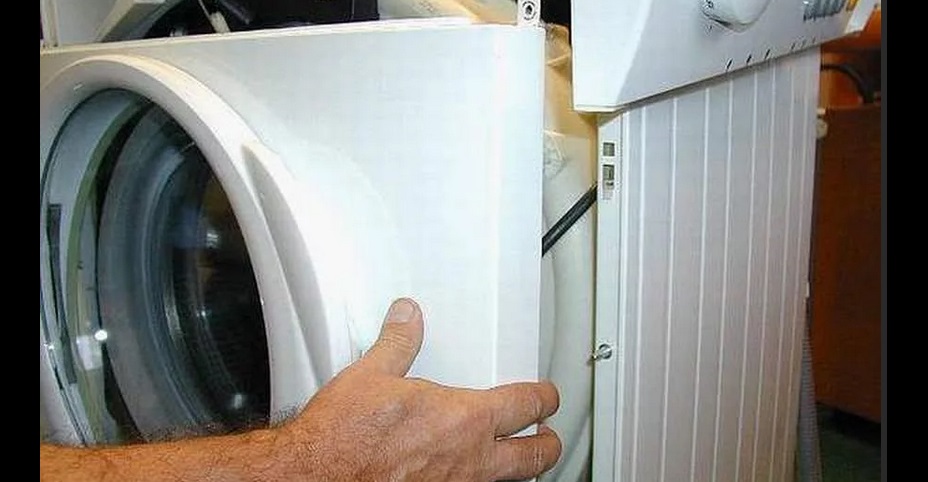
- In turn, remove each element that interferes with dismantling the tank - drive belt, pressure switch, counterweights, water heater, electric motor, and so on.
- After the shock absorbers, all that remains is to remove the washing tank from its seat.
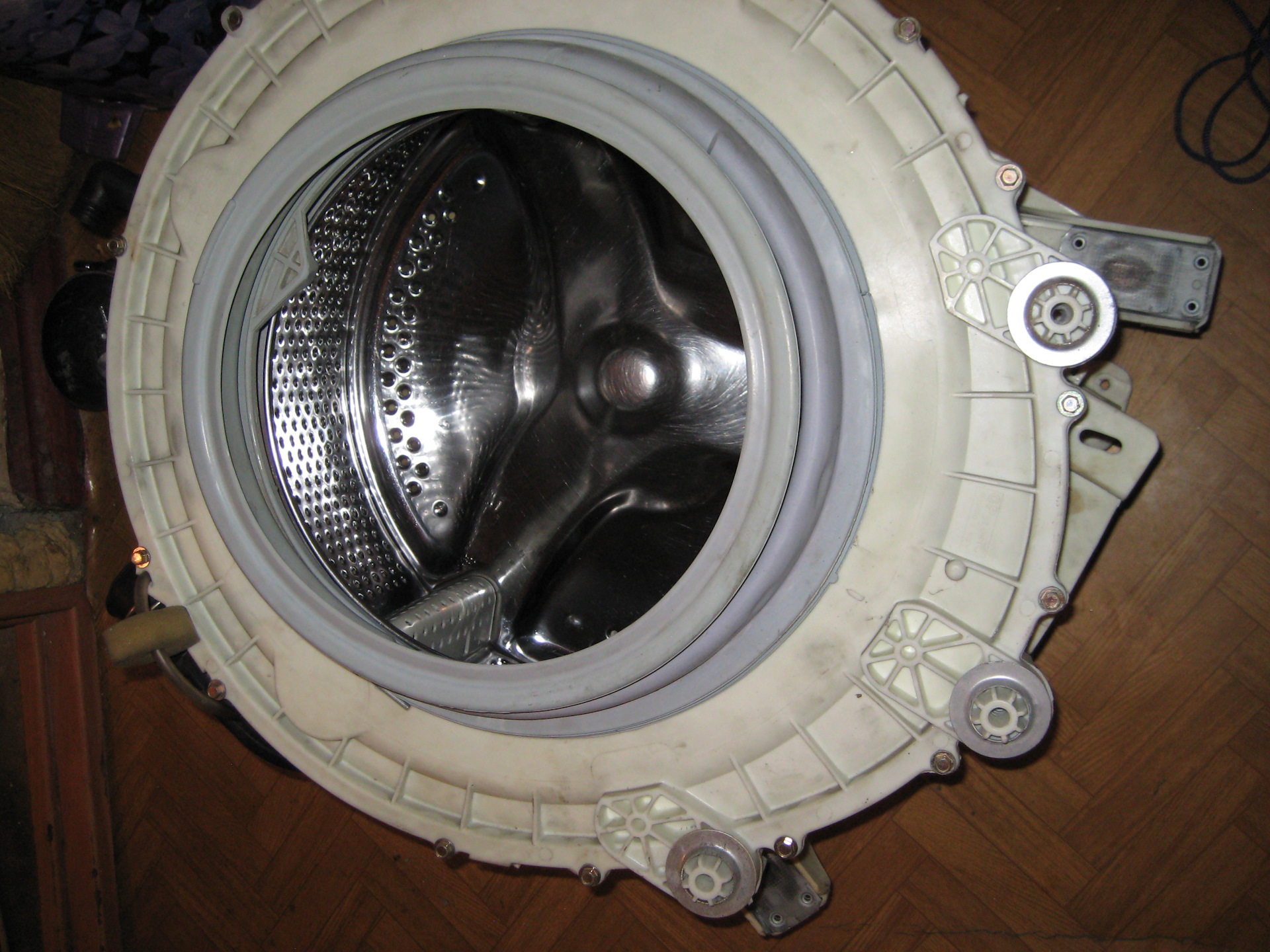
- When the crack in the tank is not very large, you can try to fix it using a home soldering iron. However, if the damage is serious, you will have to buy a new unit.
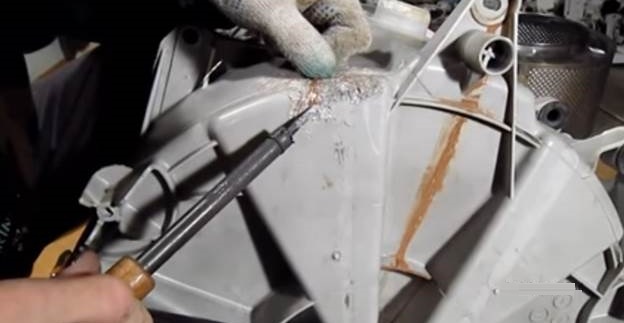
Finally, if the machine leaks during the spin cycle, then most likely this is due to the failure of the oil seal and drum bearings. You can gain free access to these parts only by halving the tank. In this case, it will not be possible to restore the elements - they can only be replaced with new spare parts.
Interesting:
Reader comments
- Share your opinion - leave a comment

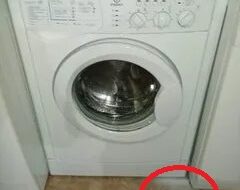
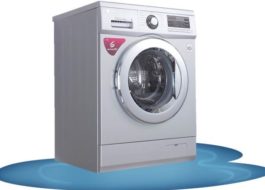

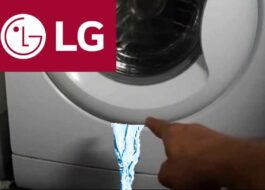
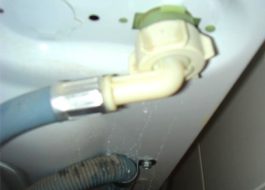















Add a comment